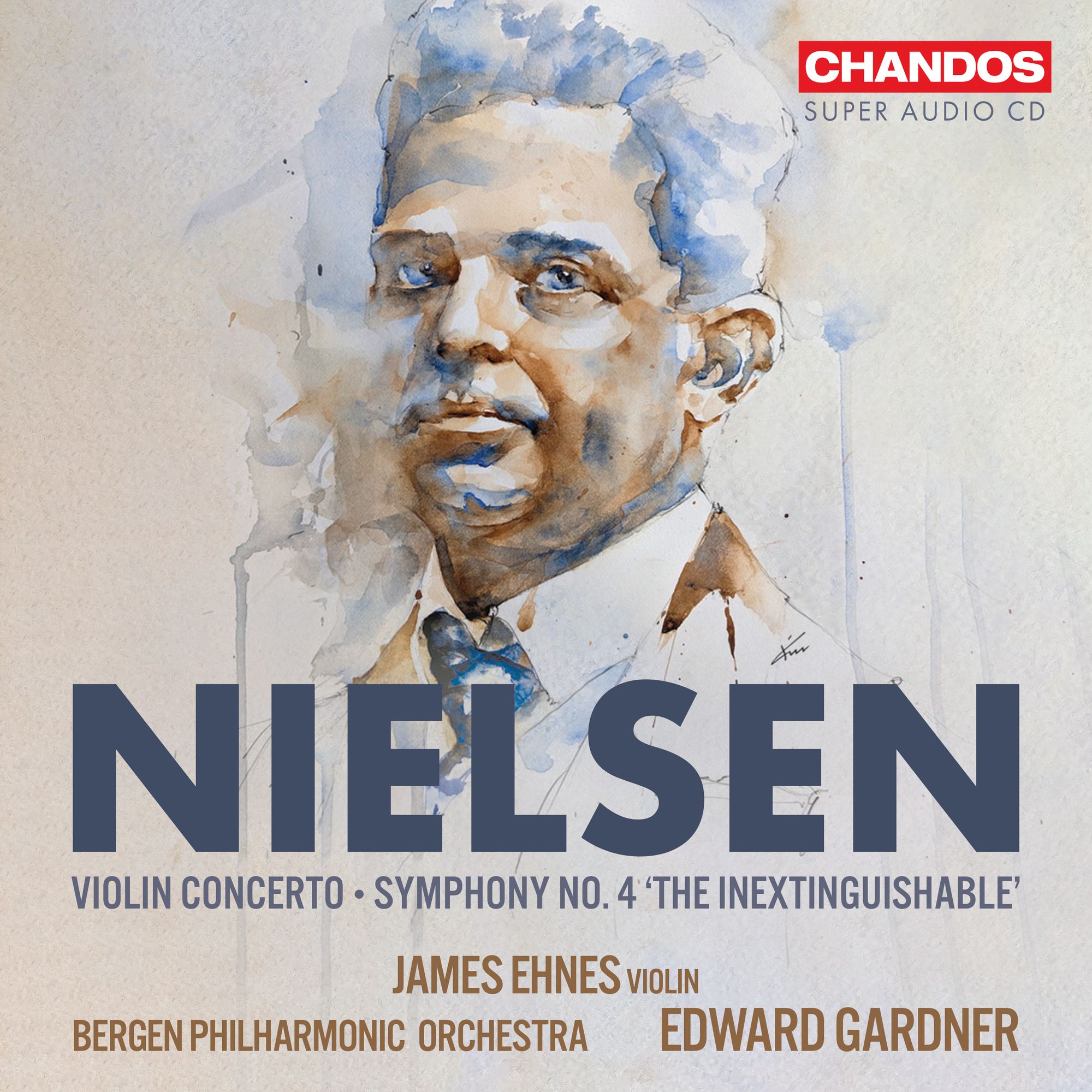Carl Nielsen: The Inextinguishable and his Violin Concerto

I last heard James Ehnes in Montréal, in a phenomenal account of the Korngold Violin Concerto with the OSM (Orchestre Symphonique de Montréal) under Rafael Payare. Here on Classical Explorer, we also previously looked at his performances of Beethoven Violin Sonatas with pianist Andrew Armstrong on the Onyx label.
Here he is, again, now in Bergen, Norway, for Carl Nielsen’s exquisite Violin Concerto. The same sense of supreme lyricism, never-ending bow and impecable musicality I was lucky enough to experience in Montréal is present in spades in this Nielsen performance:
The booklet notes are right to point out there are shades of Elgar in this music - to me, quite audible in some of the harmonic shadings of the swashbuckling ‘Allegro cavalleresco” (cavalleresco means “chivalric”. And enjoy the sheer virtuoso magnificence of Ehnes’ cadenza:
The slow movement is, as Paul Griffiths puts it in his excellent booklet notes, more of a search for a slow movement. Ehnes and Gardner convey this sense of seeking brilliantly:
The concluding Rondo is fascinating, and complex, its sudden Tranquillo (calm) section a surprise in amongst the madcap antics:
Nielsen’s Fourth Symphony is nicknamed ‘The Inextinguishable’. The composer wrote the following:
I have an idea for a new composition, which has no programme but will express what we understand by the spirit of life or manifestations of life, that is: everything that moves, that wants to live... just life and motion, though varied – very varied – yet connected, and as if constantly on the move, in one big movement or stream. I must have a word or a short title to express this; that will be enough. I cannot quite explain what I want, but what I want is good.
The complexities of the first movement are gloriously laid bare by Gardner and his forces. This is irrepressible music, representing the ‘inextibguishable” nature of music itself, and how well teh Chandos recording allows every detail through while the Bergen forces reveal the sheer power of the music in all its contrasts:
There are some fascinating textures here: pizzicato against am impatient repeated note, all in the strings, suddenly underpinned by timpani, is one of the more unsettling ones. This is a world away from the Violin Concerto.
The playful nature of the Poco Allegretto is beautfully conveyed here:
The opening of the slow movement, with its long unison string melody punctuated by lower strings strkes me as remarkably Sibelian in outlook. The Bergen Philharmonic is superb in its projection of a core resilience to the music here:
Note the destabilising woodwind about half way through, so powerfully done here, and the forgrounding of timpani throughout. The shape of the movement is brilliantly projected by Gardner and his Bergen forces, the late climax perfectly judged, the moment fo calm after needed - and yet even that is interrupted. The aggregation of strands at the end is magnificent, leading us into the finale, which contains the famous duel for two sets of timpani, which, according to the composer, must have a threatening character, even when they are playing quietly:
That timpani duel is brilliant here - as is the sense of the huge (and how Chandos’ recording still allows for every detail!). The sense of triumph coming through complex textures seems reminiscent fo teh ending of Sibelius’ Second Symphony.
Andrew Mellor, in his book The Northern Silence, talks of the influence of Nielsen on the Icelandic composer Jon Leifs (1899-1968). To quite Mellor (pages 132-33):
As much as Leifs derided anything Danish, the only schooled coposer who had a significant technical influence on his style, beyond his beloved Beethoven, was surely Carl Nielsen. In 1919, Leifs was in Copenhagen for a performance of Nielsen’s Symphont No. 4, “The Inextinguishable”. He would have noticed the Danish composer's building of harmonies based on triads and tritones, and would surely have been fired up by Nielsen’s pitting of two of the orchestra’s drummers against one another in the symphony’s infamous apex of violence. Similar devices are found all over Leifs’ music, suggesting he picked up those ideas and ran with them. Either way, it’s likely the grneral rough and tumble of Nielsen’s symphony stoked Leifs to take his own ideas to their extremes.
So, let’s hear some Leifs: his huge piece Hekla, a musical invocation of one of Iceland’s greatest volcanoes. It begins with ”‘quiet ice” (the composer’s term), a description of the nobility of the glacier; here, percussionists depict the volcanic actibity before a chorus sings words by poet Jónas Hallgrímsson. Also influenced by Icelandic folksong and including what Mellor refers to as “juddering modulations,” Leifs’ music shifts every bar, “like the footsteps of a lumbering giant”. This is a gargatuan work, with similarly gargantuan score (the composer literally had to glue pages of manuscript paper together to make it large enough); the percusion department includes, in addition to those vital timpani, rocks (large and small), metal chains, two sirens, a gun and an ondes Martenot. This is primal music, Nielsen on steroids, one might suggest. The chorus sings
violent are the howls of death
in the deep depth, from there red
flames lead the boiling lava
over the [humble] land
(translation from Mellor’s book, page 133).
Jon Leifs, surely, was the Icelandic Varèse. Unsurprisingly recorded by the Stockholm-based company BIS, here is the Iceland Symphony Orchestra conducted by En Shao; the chorus is the Iceland Schola Cantorum. Buckle up!:
Hekla is a relentless, exhausting (but simultaneously exhilarating) listen, and that final chorus surely has something of a Scriabinesque mysticism about it.
